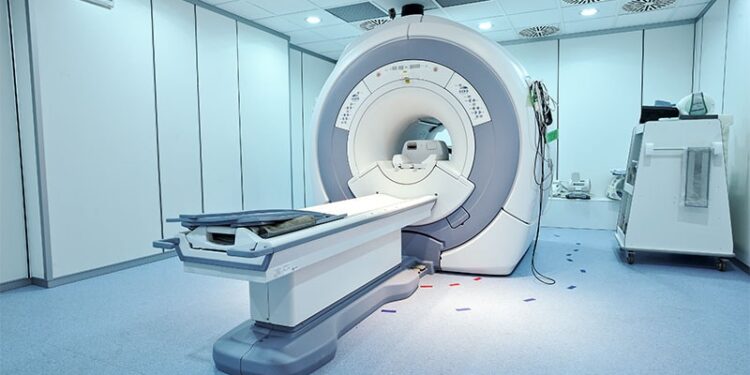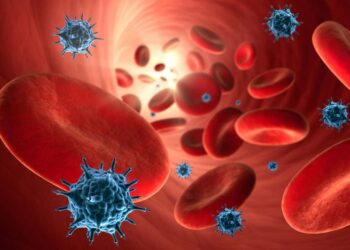TOPLINE:
The whole-body MRI revealed similar inflammation levels in both patients with new arthralgia and those with new inflammatory arthritis after exposure to immune checkpoint inhibitors (ICIs), showing three distinct patterns of inflammation.
METHODOLOGY:
- Researchers conducted a prospective imaging study from 2021 to 2024 including 60 patients (mean age, 65 years; 57% men; all White) from regional oncology services at a UK hospital who developed new musculoskeletal symptoms — arthralgia or inflammatory arthritis — after exposure to ICIs.
- Those with no history of rheumatologic autoimmune disease, active cancer, or recent joint pain served as healthy control individuals (n = 20; mean age, 62 years; 60% men).
- Participants underwent whole-body MRI to assess joint, tendon, bursal, entheseal, and spinal lesions, with imaging patterns analyzed over a 6-month follow-up.
- Imaging phenotypes were analyzed, applying a semiquantitative scoring system for synovitis, tenosynovitis, erosions, bursitis, and enthesitis, and compared between patients and healthy individuals.
- Scans were categorized into four groups on the basis of imaging patterns: polymyalgia rheumatica, peripheral inflammatory arthritis, spondyloarthropathy, and no specific pattern.
TAKEAWAY:
- MRI showed no significant differences between patient groups but showed higher levels of inflammation and erosions in patients with arthralgia and those with inflammatory arthritis than in healthy control individuals, with median joint synovitis scores of 9.0 and 10.0 vs 2.0 and median joint erosion scores of 2.0 for both groups vs 0.0, respectively.
- After exposure to ICIs, the commonly affected joints were acromioclavicular (77%), glenohumeral (75%), wrist (73%), and metacarpophalangeal (59%) joints, with knee joint synovitis being more prevalent in patients with inflammatory arthritis than in those with arthralgia (67% vs 29%).
- Three distinct MRI patterns were identified: There was a polymyalgia rheumatica pattern in 12% of patients; peripheral inflammatory arthritis pattern in 37% of patients, with varying joint involvement (23% small joints, 32% large joints, and 45% both); and a pattern of overlap of both polymyalgia rheumatica and peripheral inflammatory arthritis in 20%. A total of 31% of patients did not meet any specific pattern criteria.
- Four of the five patients who required disease-modifying antirheumatic drugs to manage their symptoms were in the peripheral inflammatory arthritis group.
IN PRACTICE:
“The finding of inflammation and erosions in patients with arthralgia without visible joint swelling suggests that clinical examination is insensitive and that the incidence of joint inflammation induced by immune checkpoint inhibitors is likely to be underestimated,” the experts wrote in a related comment.
SOURCE:
This study was led by Kate Harnden, MB ChB, Leeds Institute of Rheumatic and Musculoskeletal Medicine, Chapel Allerton Hospital, University of Leeds, Leeds, England. It was published online on June 10, 2025, in The Lancet Rheumatology.
LIMITATIONS:
The imaging of feet and ankles was excluded from MRI scans owing to time constraints, which may have overlooked inflammation in those areas. The short follow-up period of 6 months limited the ability to capture long-term outcomes. Including patients with prior autoimmune diseases may have affected the results, and the predefined MRI patterns based on classical arthritis forms may have led to nonspecific pattern labeling.
DISCLOSURES:
This study was supported by the National Institute for Health and Care Research Leeds Biomedical Research Centre. One author reported receiving a bursary travel award, and another was supported by a fellowship program by AbbVie. One author disclosed receiving honoraria, and another received research grants and consulting fees from various sources including Gilead, Lilly, AbbVie, and Deepcare.
This article was created using several editorial tools, including AI, as part of the process. Human editors reviewed this content before publication.
Source link : https://www.medscape.com/viewarticle/mri-reveals-distinct-immune-checkpoint-inhibitor-induced-2025a1000hlx?src=rss
Author :
Publish date : 2025-07-02 11:48:00
Copyright for syndicated content belongs to the linked Source.














